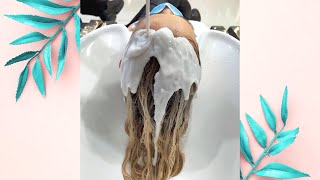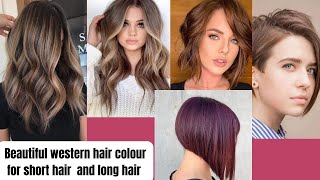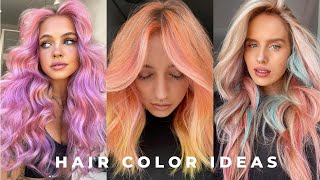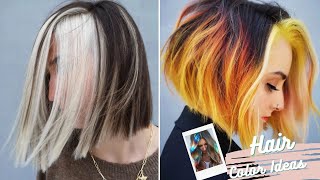What’s The Difference Between A Permanent Dye And A Rinse

To dye or not to dye. Rarely can you have a hair conversation and not end up on the topic of color. Dying hair is a great way to keep things from getting boring. It’s also something that becomes mandatory for many ladies.
The first thing I think of when I think hair color, is going blonde or covering gray. My meter has no medium, but color definitely isn’t as restricted as those two choices make it seem. Women have taken the entire color spectrum and applied it to their heads in varying shades, tones, and combinations.
Synthetic hair dye has been around since the early 1900’s when it was first made available to the masses. Since that time, it has become a billion dollar business.
Because of the diversity it allows, the options for creating new looks is endless. The color range is vast, however, the main choices available for the type of dyes used, seem to be narrowed down to one of two main categories. Permanent and Non-Permanent dyes. Within the non-permanent realm, there are rinses, semi-permanent colors and other alternative dying methods. But for this article, we are going to keep the focus on the two main groupings.
What Does Hair Dye Actually Do?
In the most basic sense, hair dyes chemically alter the color of your hair strands. This alteration can be done by removing color from the hair, which is known as lifting, or by adding color to the strands, known as depositing color.
The chemicals most commonly used to accomplish this goal are ammonia and hydrogen peroxide. The varying degrees of intensity in these two chemicals determine how long color lasts, once it’s deposited and also how much the deep the subsequent color is deposited into the layers of the hair.
Ammonia and hydrogen peroxide cause the cuticles of the hair to swell. This is necessary for the color to permeate the hair and outlast washing. Shampoos are designed to remove debris and other particles from the hair. If hair color were designed to simply sit on the outermost layer of hair, it would be washed away immediately during the shampooing process.
 Rinses
Rinses
Hair dyes known as rinses are marketed as less damaging. This is because the chemicals used to make rinses cause the cuticle of the hair shaft to swell large enough for the color to be deposited deep enough to endure shampooing and conditioning.
The catch to rinses is that the color is still not deep enough in the hair shaft to be completely safe from shampoos and other hair products. This is why a rinse will, literally, be slowly washed out of the hair. Rinses also only cover the hair’s natural cover. They don’t actually remove color. Once a rinse is washed out, the original hair color will become visible again.
For the reasons stated above, rinses may seem to be less damaging to the hair, but they often need to be reapplied more frequently than permanent hair dyes. Over time, this may cause damage similar to that of permanent hair dye.
Rinses also have a limited range of outcomes because they sit on top of the hair and only lightly penetrate the hair shaft. So for those looking to be more daring with their color or who want to play with color combinations, a rinse might not be what will work for you.
Permanent Hair Dye
Now on to the big daddy. Permanent hair dye is just that, permanent. Once hair is permanently dyed, the only way it can be removed is to grow it out or to strip the hair of the color with a second chemical process.
Like with rinses, permanent dye uses ammonia and hydrogen peroxide to lift and swell the cuticle. The main difference between rinses and permanent dyes is that the potency of the ammonia is much stronger in a permanent color.
The ammonia will swell the cuticle to a point that allows the color to penetrate the cortex of the hair. The cortex is the innermost layer of the hair. Once the cortex is penetrated and color has been deposited there, that color will remain…FOREVER!
The cortex is very fragile which is why chemically altering it with permanent dye is damaging. It weakens the bonds of the hair on each level. From the cuticle to the cortex, the bonds that make up the hair are all broken down.
Of course, the good thing about permanent hair dye is that it does not have to be reapplied to the portions of hair which have been previously colored. The argument can be made that the hair is only damaged once to achieve a certain color.
This holds true for jet black or a similar dye job, but most permanent dyes are not used singularly. The differences between a permanent dye and a rinse should definitely be weighed when you are deciding on a hair color method.




